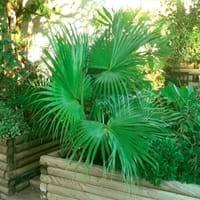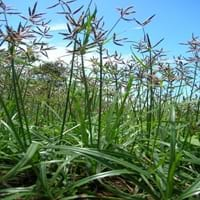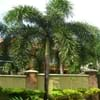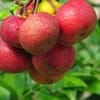Life Span
Perennial
Perennial
Type
Palm or Cycad
Sedge or Rush
Origin
United States, Southeastern United States, South-Central United States
World/Pandemic
Types
Not Available
Not Available
Number of Varieties
Not Available
Habitat
Floodplains, Lowland, River side, Swamps
Wild
USDA Hardiness Zone
7-12
5-12
Sunset Zone
H1, H2, 3b, 4, 5, 6, 7, 8, 9, 12, 13, 14, 15, 16, 17, 19, 21, 22, 23, 24
A1, A2, A3, H1, H2, 1a, 1b, 2a, 2b, 3a, 3b, 4, 5, 6, 7, 8, 9, 10, 11, 12, 13, 14, 15, 16, 17, 18, 19, 20, 21, 22, 23, 24
Habit
Clump-Forming
Mat-forming
Minimum Width
Not Available
Flower Color
Ivory
Orange, Gold, Bronze, Tan
Flower Color Modifier
Bicolor
Bicolor
Fruit Color
Chocolate, Black
Dark Brown
Leaf Color in Spring
Green, Gray Green, Dark Green
Green, Yellow green
Leaf Color in Summer
Gray Green, Dark Green
Green, Yellow green
Leaf Color in Fall
Green, Gray Green, Dark Green
Green, Yellow green
Leaf Color in Winter
Olive, Gray Green, Dark Green
Green, Yellow green
Leaf Shape
Circular, dissected, long and linear
V-Shaped
Plant Season
Spring, Summer, Fall, Winter
Not Available
Sunlight
Full Sun, Partial Sun, Partial shade
Full Sun, Partial Sun
Growth Rate
Slow
Very Fast
Type of Soil
Clay, Loam, Sand
Clay, Loam, Sand
The pH of Soil
Acidic, Neutral, Alkaline
Acidic, Neutral, Alkaline
Soil Drainage
Poorly Drained
Average
Bloom Time
Early Summer
Summer
Tolerances
Wet Site, Salt
Drought
Where to Plant?
Container, Ground
Ground
How to Plant?
Seedlings, Stem Planting
creeping rhizomes, Seedlings, Tubers
Plant Maintenance
Medium
Medium
Watering Requirements
Do Not over Water, Never Over-water, Requires regular watering, Requires watering in the growing season
Requires consistently moist soil
In Summer
Lots of watering
Lots of watering
In Spring
Moderate
Moderate
In Winter
Average Water
Average Water
Soil pH
Acidic, Neutral, Alkaline
Acidic, Neutral, Alkaline
Soil Type
Clay, Loam, Sand
Clay, Loam, Sand
Soil Drainage Capacity
Poorly Drained
Average
Sun Exposure
Full Sun, Partial Sun, Partial shade
Full Sun, Partial Sun
Pruning
Remove damaged leaves, Remove dead leaves
Remove damaged leaves, Remove dead branches, Remove dead leaves
Fertilizers
fertilize every 2-3 weeks while growing
All-Purpose Liquid Fertilizer
Pests and Diseases
Insects
Rust
Plant Tolerance
Drought
Drought
Flowers
Insignificant
Insignificant
Flower Petal Number
Single
Single
Foliage Texture
Bold
Fine
Foliage Sheen
Matte
Not Available
Allergy
Avoid during Pregnancy
Oral Allergy
Aesthetic Uses
Beautification, Landscape Designing, Showy Purposes
Not Used For Aesthetic Purpose
Beauty Benefits
Not Available
Good for skin, Protects from sun damage
Environmental Uses
Air purification, Food for insects, Prevent Soil Erosion
Air purification
Medicinal Uses
Asthma, Baldness, Cold, Cough, Migraines, Sore throat
Aphrodisiac, Digestive, Diuretic, Tonic
Part of Plant Used
Whole plant
Fruits
Other Uses
Decoration Purposes, Employed in herbal medicine, Showy Purposes, Used as Ornamental plant, Used for its medicinal properties
For making oil, used for weaving hats
Used As Indoor Plant
Yes
No
Used As Outdoor Plant
Yes
Yes
Garden Design
Bog Garden, Feature Plant, Foundation, Hedges, Mixed Border, Tropical
Not Available
Botanical Name
SABAL minor
CYPERUS esculentus
Common Name
Bush Palmetto, Dwarf Palmetto, Little Blue Stem, Swamp Palmetto
Nut Sedge,chufa sedge, nut grass, yellow nutsedge
In Hindi
बौना पल्मेट्टो
अखरोट सेज
In German
Zwerg Palmetto
Nuss -Segge
In French
Palmetto nain
souchet
In Spanish
Palmetto enano
tuerca de la juncia
In Greek
Νάνος Palmetto
καρύδι σπαθόχορτο
In Portuguese
Palmetto anão
Nut Sedge
In Polish
Dwarf Palmetto
nakrętka turzyca
In Latin
Pumilio Palmetto
nut Sedge
Phylum
Magnoliophyta
Magnoliophyta
Class
Liliopsida
Liliopsida
Family
Arecaceae
Cyperaceae
Clade
Angiosperms, Commelinids, Monocots
Angiosperms, Commelinids, Monocots
Tribe
Not Available
Cypereae
Subfamily
Coryphoideae
Not Available
Number of Species
Not Available
Season and Care of Dwarf Palmetto and Nut Sedge
Season and care of Dwarf Palmetto and Nut Sedge is important to know. While considering everything about Dwarf Palmetto and Nut Sedge Care, growing season is an essential factor. Dwarf Palmetto season is Spring, Summer, Fall and Winter and Nut Sedge season is Spring, Summer, Fall and Winter. The type of soil for Dwarf Palmetto is Clay, Loam, Sand and for Nut Sedge is Clay, Loam, Sand while the PH of soil for Dwarf Palmetto is Acidic, Neutral, Alkaline and for Nut Sedge is Acidic, Neutral, Alkaline.
Dwarf Palmetto and Nut Sedge Physical Information
Dwarf Palmetto and Nut Sedge physical information is very important for comparison. Dwarf Palmetto height is 240.00 cm and width 240.00 cm whereas Nut Sedge height is 30.00 cm and width Not Available. The color specification of Dwarf Palmetto and Nut Sedge are as follows:
Dwarf Palmetto flower color: Ivory
Dwarf Palmetto leaf color: Green, Gray Green and Dark Green
Nut Sedge flower color: Orange, Gold, Bronze and Tan
- Nut Sedge leaf color: Green and Yellow green
Care of Dwarf Palmetto and Nut Sedge
Care of Dwarf Palmetto and Nut Sedge include pruning, fertilizers, watering etc. Dwarf Palmetto pruning is done Remove damaged leaves and Remove dead leaves and Nut Sedge pruning is done Remove damaged leaves, Remove dead branches and Remove dead leaves. In summer Dwarf Palmetto needs Lots of watering and in winter, it needs Average Water. Whereas, in summer Nut Sedge needs Lots of watering and in winter, it needs Average Water.





